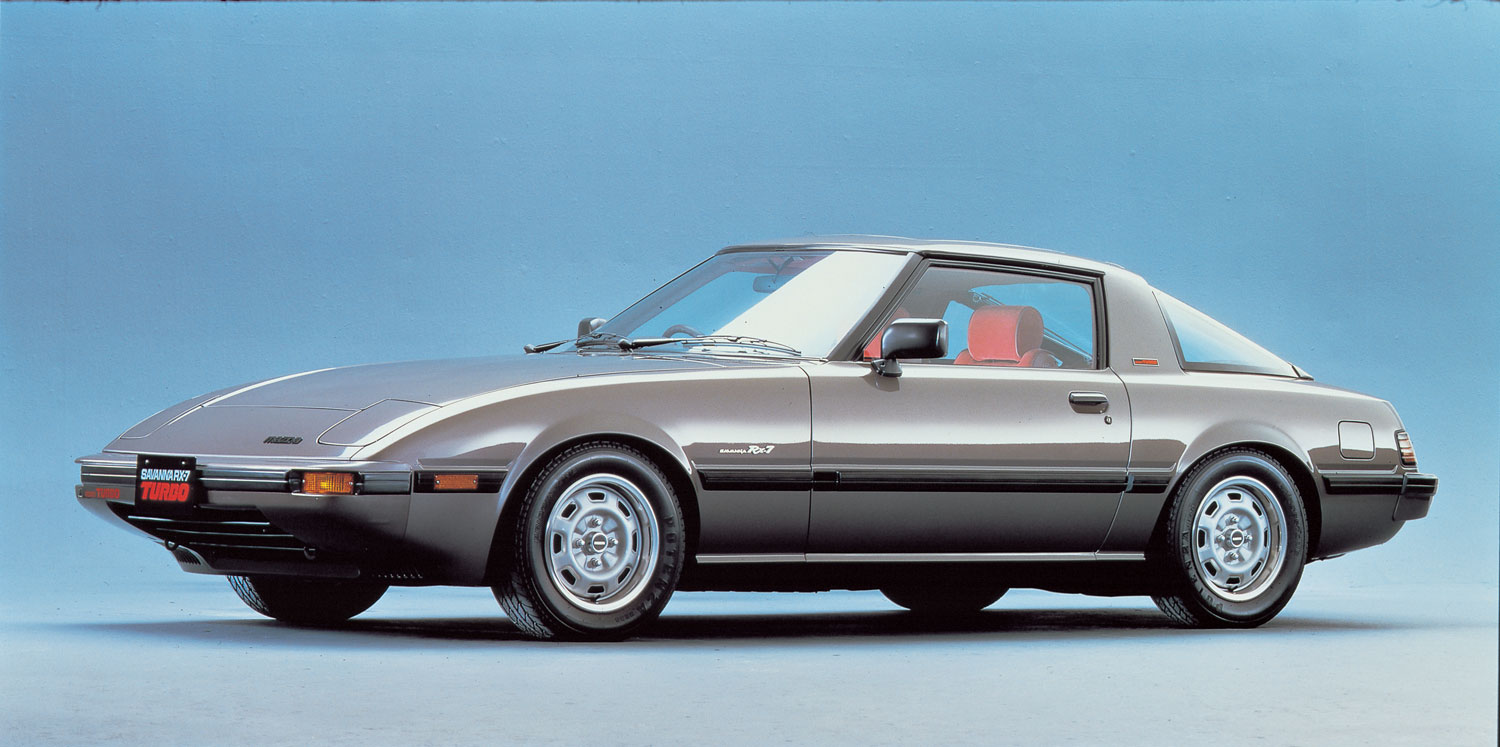Why aren’t 1979-85 Mazda RX-7s worth more?
Mention Mazda, and most people immediately recall the million-selling Miata MX-5 roadster, built for the last 26 years. But the company hit a home-run 20 years earlier with the rotary engine RX-7, greatly improving on Felix Wankel’s design. It was so successful that the four-rotor Mazda 787B won the 24 Hours of Le Mans in 1991—the only Japanese car company to do so.
Co-developed with NSU, a German company, the rotary’s survival was far from certain. Mazda built the Cosmo 110 rotary coupe from 1967-72 but only sold 1,176 units. But in 1971 the company pinned its future on R100 and RX-2 coupes, following up with RX3 coupes, sedans, wagons, and even pickups in 1972. But engine failures required constant factory replacements, as Mazda struggled to develop durable apex seals (like piston rings, but for a rotary). Meanwhile the 1973 gas crisis threatened the model’s survival, as the engine was also thirsty. By 1978, their economical GLC 4-cylinder hatchback was all that kept the company afloat.
However Mazda President Kenichi Yamamoto remained a believer, and launched the Savanna rotary sports coupe in Japan in 1978. The Savanna debuted in the U.S. a year later as the RX-7. It had the 100 bhp 1146-cc 12A engine from the RX-3, and a stylish two-seater body, with pop-up headlights.
The fragile apex seals were improved, and gas mileage in later models jumped from the original 12-15 mpg to more than 20 mpg. Best of all, Mazda rotary engines proved durable and mileages of 250,000 are quite common, especially using synthetic oil.
Air conditioning and a sunroof were offered, with a sizeable hatchback. Headroom was somewhat restricted, but in the U.S. Mazda wisely eliminated the laughably small “plus two” seats fitted in Europe and Japan. Coil spring suspension was combined with front disc brakes, five-speed transmission and a live rear axle, located by trailing links. The RX-7 was good for 0-60 in 8.5 seconds and 115 mph, and the engine proved quiet and reliable. At $6,995, it was a bargain.
Transistor ignition appeared in 1979, and clunky bumpers were streamlined in 1981, when the fuel tank was enlarged and the dash redesigned. Standard S and GS models were joined in 1981 by the top-line GSL, with four-wheel disc brakes, alloy wheels, limited slip differential, and power windows. The final variation was the GSL-SE of 1984, with signature alloy wheels, the fuel-injected, 135 bhp, 1308cc 13B motor, and top speed of 125 mph. The maximum price had risen to $15,295, but comparable cars cost more.
Mechanically, the RX-7 has few inherent problems, save a rather weak second gear synchro, and an inadequate power-steering pump, which is best avoided. But fuel-injected parts for the GSL-SE are difficult to find, and the oil cooler for that model is different from the carbureted car.
Mazda rotary engines have raced competitively for 45 years. They dominated the GTU class in IMSA, and challenged Corvettes and Porsches in GTO. They remain strong GT3 contenders at SCCA runoffs, and the 2016 national points champion, Gary Bockman of Portland, Ore., only missed winning the GT3 title due to U-joint failure on the penultimate lap. In 1990, the same car won the GT3 championship in the hands of fellow Portlander Don Walker. Bockman will be back.
In all, 474,565 of the compact first-generation RX-7s were sold and just like the Miata, a robust survival rate has kept prices reasonable. Engine, gearbox, brakes, and suspension proved durable and bodies rust-resistant. The only problem for collectors is finding skilled rotary mechanics. Depending on use, collectible cars eventually require engine rebuilds, and a quick glance at the mystifying shop manual confirms that none of your tools (or basic knowledge) will help.
Prices for sound RX-7s range from $2,500 to about $4,000, though low-mileage examples are heading for $10,000. Due to their reliability and sporting qualities, low-mileage cars are very rare, which explains the price variance. But 150,000 mile cars still promise lengthy service, and wrecking yards will provide plentiful spares. However NOS parts are more difficult; there are few new cases for 12A carbureted engines, and the much rarer 13B engine cases are practically non-existent. Due to their abundance, don’t expect RX-7s to appreciate dramatically. But if you’re looking for an inexpensive, fun sports car this is a great option.


